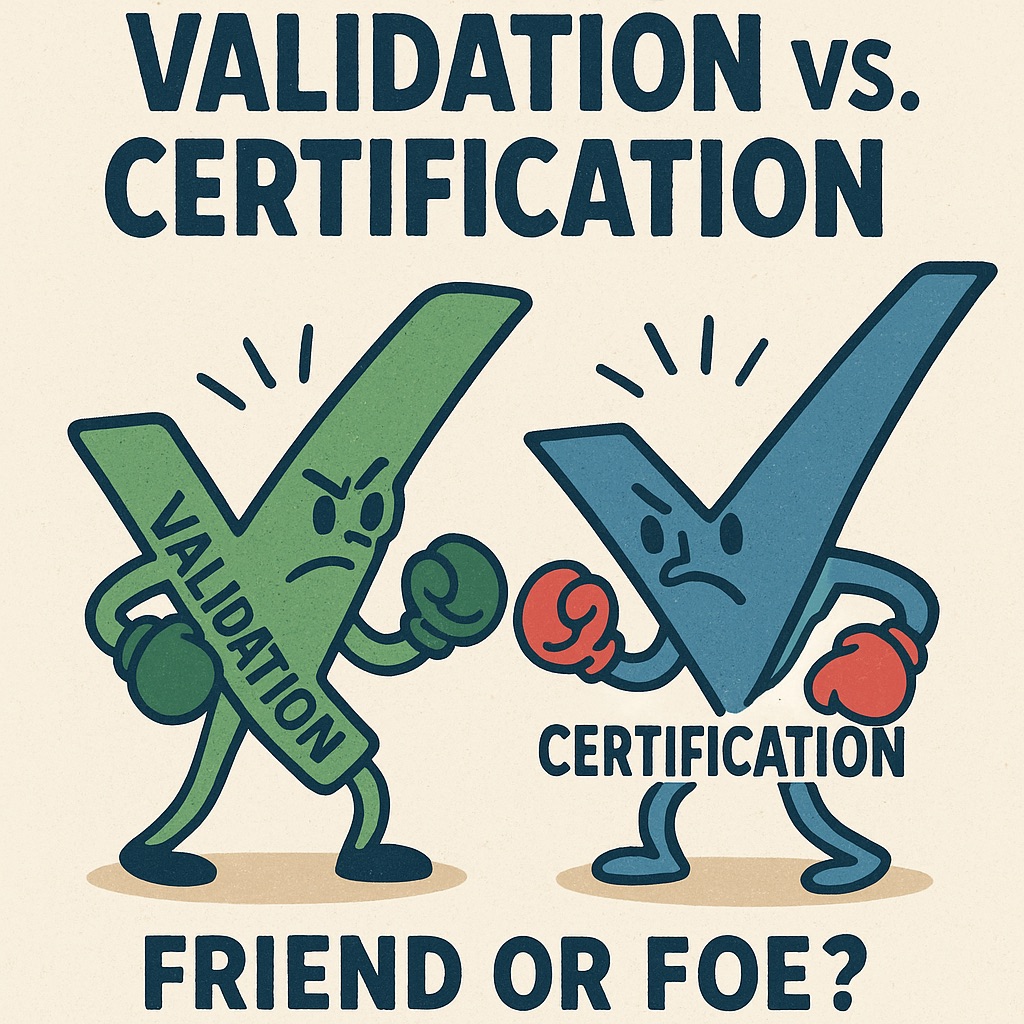
Though both aim to demonstrate that your battery system is “ready,” they serve distinct purposes and address different questions. Validation proves that your design performs as intended, while certification confirms that it meets regulatory and industry standards. Confusing the two can result in costly redesigns, project delays, or even failure to enter the market.
Validation: Are We Building the Right Product, the Right Way?
Validation is an internal, engineering-driven process. Its goal is to ensure that the system you’ve designed actually performs as expected, under real-world conditions, across its entire lifecycle. You might have a promising design on paper but validation puts it to the test with functional, environmental and long-term stress scenarios to uncover any hidden flaws.
It often begins with lab-based functional checks: does the pack charge and discharge properly? Are protections working? Is the state-of-charge (SOC) reading accurate? From there, validation can involve more intense testing like thermal cycling, vibration, mechanical shock, water ingress (IP rating) or altitude performance. For example, an aerospace pack might require validation at higher drop height, while a marine pack must prove resistance to salt fog and splash conditions.
Longer-term testing is also essential. How does the pack hold up to thousands of cycles? How fast does it degrade when stored in hot environments? Can the design withstand thermal propagation events or short circuits? At ESS, we use model-based simulations in parallel with physical validation to forecast these effects early, allowing clients to make strategic design changes before committing to tooling or production.
Certification: Are We Compliant With External Regulations?
Certification is different. It’s a formal, third-party process that proves your battery system meets regulatory and industry standards required for sale, operation or transport. Whether you’re entering the electric vehicle market, deploying batteries for grid storage, or shipping lithium-ion batteries internationally, certification is non-negotiable.
Each sector and geography has different standards. For instance, UN 38.3 is mandatory for transporting lithium batteries by road or sea. If you’re designing a system for industrial use, IEC 62619 outlines safety and abuse test requirements at cell level whilst IEC 62620 outlines the tests requirement at module/pack level. ISO 26262 governs functional safety in automotive applications whilst IEC 61508 governs it for industrial use. Certification ensures your product is legally compliant and safe, not just performant. It’s not something that should be left until the end as aligning early can prevent significant design changes later.
The certification process typically involves documentation, witness testing at accredited labs and clear design traceability. It also extends beyond testing, often requiring production quality systems, material declarations, and labelling to ensure traceability and consistency from prototype to mass production. At ESS, we help clients understand these requirements up front, so certification isn’t a blocker, it’s built into the process from day one.
Validation vs. Certification — A Quick ComparisON
| Aspect | Validation | Certification |
|---|---|---|
| Purpose | Internal performance confidence | External regulatory compliance |
| Driven by | Engineering team | Regulatory / QA / Compliance team |
| Scope | Functionality, safety, lifetime, integration | Legal and safety standards in target markets |
| Who performs it? | Internal or lab partner | Accredited certification bodies |
| Custom or standard? | Tailored to product and use case | Follow defined regulatory frameworks |
Why You Need Both EarlY?
While they differ in scope and execution, validation and certification complement each other. A battery system that passes validation but fails certification can’t be sold. And a battery that’s certified but not validated might pass compliance but fail in the field. You need both to bring a robust, reliable and legally deployable product to market.
The best development programs integrate validation and certification from the earliest stages. For example, if you’re developing a pack for marine applications, you’ll want to validate IP ratings, salt exposure and temperature cycling, but also work with certification bodies like DNV or lloyd’s Register (LR) to understand documentation and design requirements early. Similarly, an EV startup may need to align validation efforts with ECE R100, ISO 26262, and EMC testing requirements well before entering the homologation process.
At ESS, we help clients develop a unified test plan that satisfies both validation and certification goals, often reusing data where possible to avoid duplication.
Whether you’re building your first prototype or gearing up for scaled production, understanding the difference between validation and certification (or planning for both) is key to long-term success. These are not checkboxes to tick at the end. They are strategic tools to build better products, faster.
Need Help Navigating the Path to Market?
ESS has helped clients across automotive, marine, aerospace and industrial sectors successfully validate and certify complex battery systems, from proof-of-concept through production.
Our team knows how to:
- Align test plans across disciplines
- Map the correct certification path for your sector
- Validate your system for real-world durability
- Work directly with certification labs to streamline approval
Contact us, whether you’re starting from scratch or need to course-correct, ESS is ready to support your next battery project, with clarity, confidence and compliance.